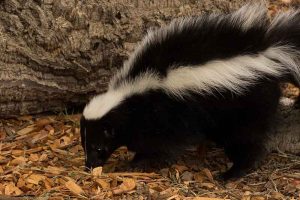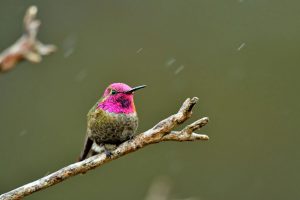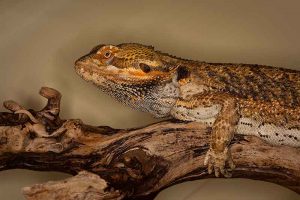Blog
More Wildlife in Winter
Our Wildlife in Winter blog article on the behaviors wildlife uses to cope with cold winter weather was very popular. Here are a few more examples of the incredible ways wild animals have adapted and behaviors they use to survive in the cold.
Hummingbirds
Hummingbirds look frail but are incredibly tough birds. In cold weather, their 107 degree body temperature can drop to 48 degrees for a nightly mini-hibernation! Their heartbeat drops from 1260 beats per minute to 50-180 beats per minute. Hummingbirds even snore!
Golden Eagles
California is fortunate to have Golden eagles that live here year-round and even a few migrate here for winter. They begin breeding in January and you might see them in forests, canyons, shrub lands, grasslands and oak woodlands. You can see CuriOdyssey’s seriously impressive eagles up close or go for a hike in search of wild eagles in the natural world.
Skunks
In bad weather, skunks may hunker down in their complex borough that usually consists of 3 rooms and up to 5 entrances only 8 inches wide. They are shy and will spray in defense so don’t go looking for them in the wild!

Lizards
Lizards get their heat from their external environment, so in winter, they must find warmer conditions or use brumation to cope with cold. They dig boroughs in rocks or tree trunks, becoming numb to the cold and saving energy until warm weather returns.
Foxes
CuriOdyssey’s gray fox would love to see you! Gray foxes don’t hibernate in winter. They hunt during the day and sunbathe to catch some rays during short winter days.
If you’re passionate about wildlife, check out Wildlife in Winter, Differences Between Similar Animals and Simple Ways You Can Help Wildlife.
Then come see CuriOdyssey’s rescued native wildlife up close!
Join the CuriOdyssey Community
LOCATION
1651 Coyote Point Drive
San Mateo, CA 94401
Ohlone Land Acknowledgement
650-342-7755
info@curiodyssey.org
CuriOdyssey is a 501(c)(3) non-profit, Tax ID 94-1262434








